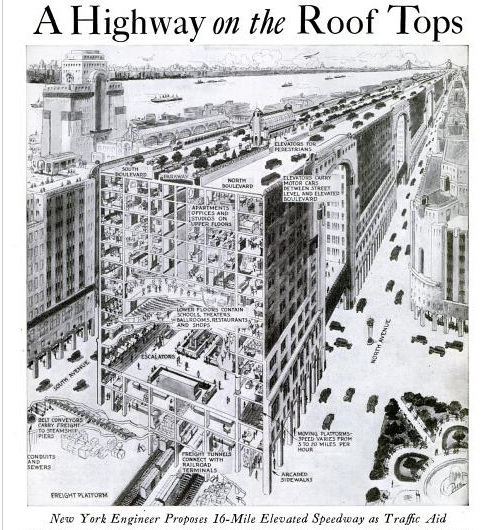NYC’s Forgotten ‘War on Christmas Trees’
Discover how an obscure holiday crackdown affects festive street vendors today!


In July 1927, Popular Science profiled a proposal for a sixteen mile elevated highway that would span the rooftops of a Manhattan avenue. This futuristic plan came from the mind of John K. Hencken, a New York based engineer, and was allegedly “approved by a number of eminent engineers and city planners.” The plan called for a series of uniform twelve-story buildings extending from the Battery Park to Yonkers.
The added benefit of this plan was that it called for the highway to be connected by bridges at all cross streets, thereby allowing for the free movement of vehicular and pedestrian traffic at grade crossings. Urban planners today would commend the sub-basements which were supposed to contain “four railroad tracks for freight service, as well as conduits and sewers.” Had this plan been realized, it would have contained a city within a city; apartments, offices, studios, schools, theaters, ballrooms, restaurants, and shops would have filled in the upper levels of these unique structures.
Subscribe to our newsletter